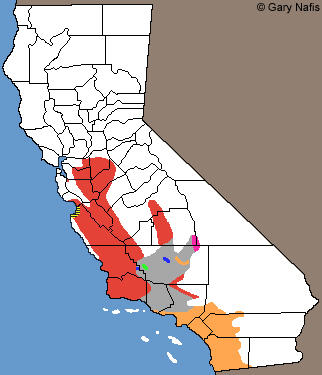
Range of California Anniella:
Red, Blue, Green, Orange, Pink, Gray, Yellow and Black stripes
Click the map for a guide
to the other species
|
Five species of Anniella have been described in California, all of which are included below.
|
| Temblor Legless Lizard - Anniella alexanderae Papenfuss & Parham, 2013 |
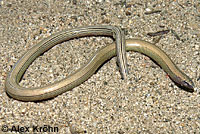 |
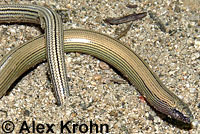 |
|
| Adult, Kern County © Alex Krohn |
|
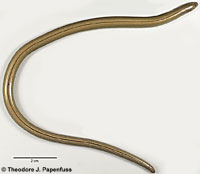 |
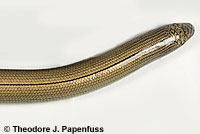 |
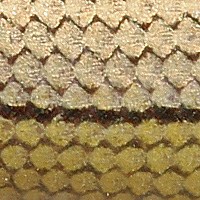 |
| Adult, Kern County © Theodore J. Pappenfuss |
North American Legless Lizards, genus Anniella, have smooth cycloid scales. |
 |
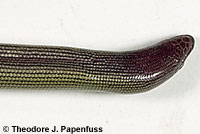 |
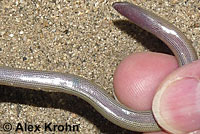 |
Adult, Kern County, showing unique light gray underside
© Theodore J. Pappenfuss
|
Adult, Kern County, showing unique light gray underside © Alex Krohn
|
| |
|
| Temblor Legless Lizard Habitat |
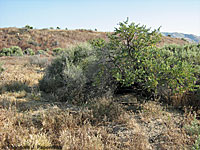 |
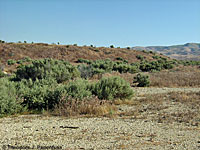 |
|
Habitat of type locality, Kern County
© Theodore J. Pappenfuss
|
Habitat of type locality, Kern County
© Theodore J. Pappenfuss |
|
|
|
|
| Southern Sierra Legless Lizard - Anniella campi Papenfuss & Parham, 2013 |
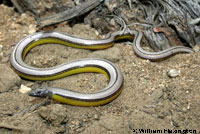 |
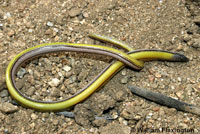 |
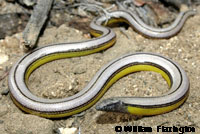 |
Adult, Big Spring, Kern County © William Flaxington
|
| |
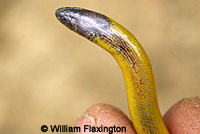 |
|
| |
Adult, Big Spring, Kern County
© William Flaxington |
|
| |
|
|
| Southern Sierra Legless Lizard Habitat |
| |
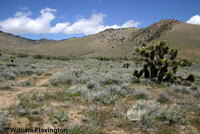 |
|
| |
Habitat, Eastern Sierra Nevada Mountains, Kern County
© William Flaxington |
|
|
|
|
| Bakersfield Legless Lizard - Anniella grinnelli Papenfuss & Parham, 2013 |
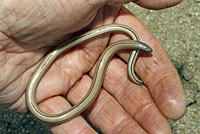 |
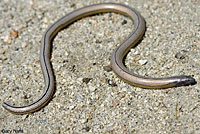 |
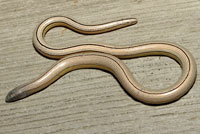 |
| Adult, Bakersfield, Kern County |
 |
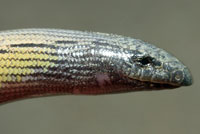 |
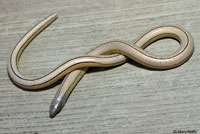 |
| Adult, Bakersfield, Kern County |
 |
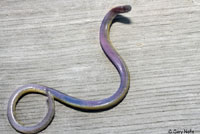 |
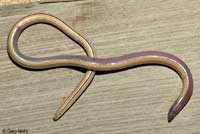 |
Purple and red underside of adult, Bakersfield, Kern County
|
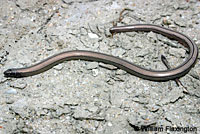 |
 |
|
Adult, Bakersfield, Kern County © William Flaxington
|
|
| |
|
| Bakersfield Legless Lizard Habitat |
 |
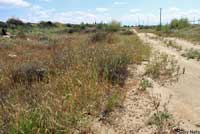 |
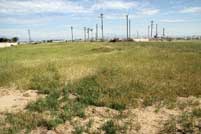 |
| Habitat, Bakersfield, Kern County |
Habitat, Bakersfield, Kern County |
Habitat, Bakersfield, Kern County |
| |
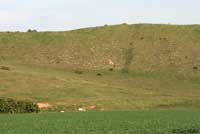 |
|
| |
Habitat of type locality, sand ridge near Bakersfield, Kern County |
|
|
|
|
| Northern California Legless Lizard - Anniella pulchra pulchra Gray, 1852 |
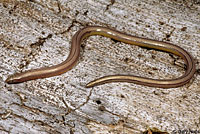 |
 |
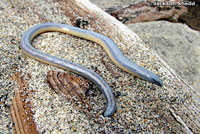 |
| Adult, San Benito County |
Adult, Monterey County
© Jackson Shedd |
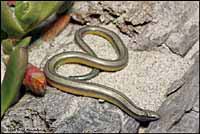 |
 |
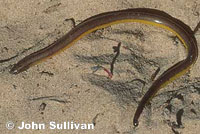 |
Adult, Monterey County,
© 2005 Brad Alexander |
Adult, Monterey County,
© 2005 Brad Alexander |
Adult, San Luis Obispo County, from the dusky Morro Bay population,
© John Sullivan |
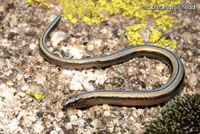 |
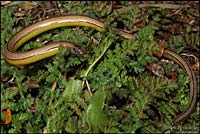 |
|
| Juvenile, Kern County © Jackson Shedd |
Adult, Kern county
© Brad Alexander |
|
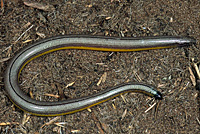 |
 |
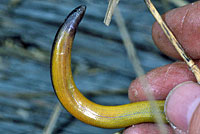 |
Adult, from the dusky Morro Bay population, San Luis Obispo County
|
 |
 |
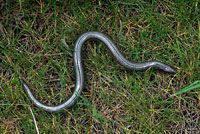 |
| Adult, from the dusky Morro Bay population, San Luis Obispo County |
| |
| Northern California Legless Lizard Habitat |
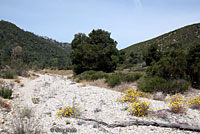 |
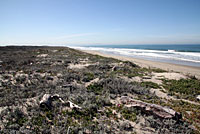 |
 |
Habitat, sandy wash with oaks,
San Benito County |
Habitat, coastal dunes,
Santa Cruz County |
Habitat, Antioch dunes,
Contra Costa County |
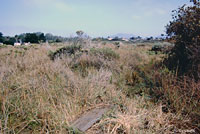 |
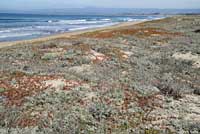 |
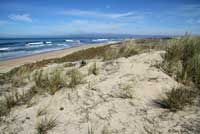 |
Habitat, sandy coastal grassland, Morro Bay, San Luis Obispo County
|
Habitat, coastal dunes,
Santa Cruz County |
Habitat, coastal dunes,
Santa Cruz County |
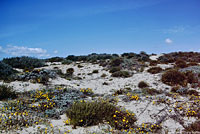 |
 |
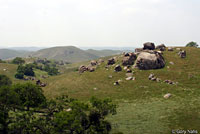 |
Habitat, coastal dunes,
San Luis Obispo County |
Habitat, coastal dunes,
San Luis Obispo County |
Habitat, foothills grassland, Kern County |
|
|
|
| Black Legless Lizard - Anniella pulchra nigra Fischer, 1885 |
This form of Anniella from the coast of Monterey Bay in Monterey County was formerly recognized as the subspecies Anniella pulchra nigra - Black Legless Lizard, but it is actually just a melanistic form of Anniella pulchra.
Some herpetologists and state agencies, including the California Department of Fish and Wildlife, still recognize this subspecies, so it is included here separately from the rest of Anniella pulchra..
|
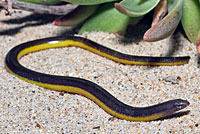 |
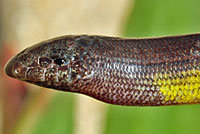 |
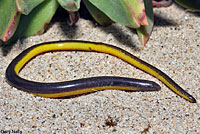 |
| Adult, Monterey County |
Adult, Monterey County |
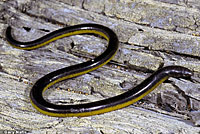 |
 |
 |
| Adult, Monterey County |
Adult, Monterey County |
Adult, Monterey County |
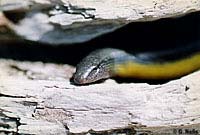 |
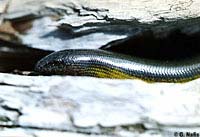 |
 |
| Adult, Monterey County |
Adult, Monterey County |
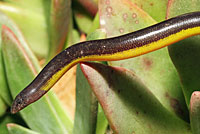 |
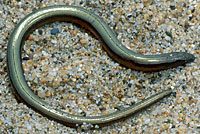 |
|
| Adult, Monterey County |
Juvenile, Monterey County |
|
| |
|
|
| Black Legless Lizard Habitat |
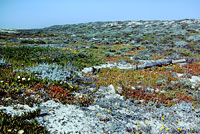 |
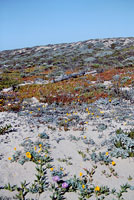 |
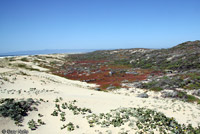 |
| Coastal dunes habitat, Monterey County |
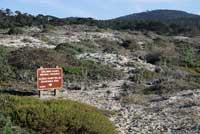 |
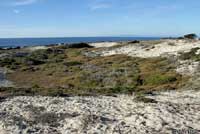 |
|
| Protected dunes habitat, Monterey County |
|
|
|
|
| Southern California Legless Lizard - Anniella stebbinsi Papenfuss & Parham, 2013 |
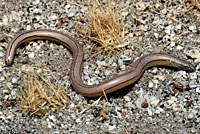 |
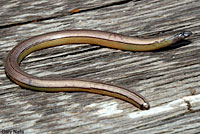 |
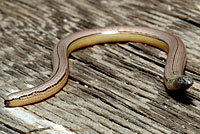 |
| |
Adult, Riverside County |
|
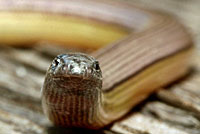 |
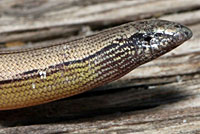 |
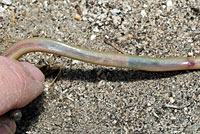 |
| |
Adult, Riverside County |
|
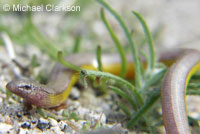 |
 |
|
Adult, Riverside County
© Michael Clarkson |
Adult, Los Angeles county
© 2004 Bon Terra Consulting |
|
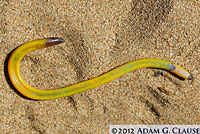 |
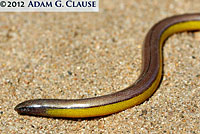 |
|
Adult, Los Angeles County © Adam G. Clause
Animal captured and handled under state Scientific Collecting Permit and released at point of capture.
|
|
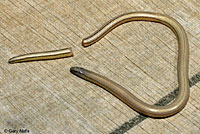 |
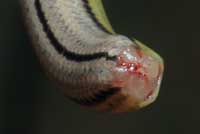 |
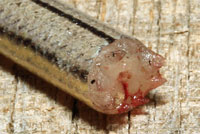 |
Adult, with detached tail,
Riverside County |
The body end of the detached tail - Left
The detached tail - Right |
| |
|
| Southern California Legless Lizard Habitat |
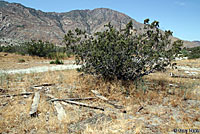 |
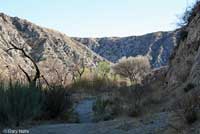 |
 |
| Habitat, Riverside County desert |
Desert riparian habitat,
San Bernardino County |
Habitat, sandy wash in oak woodlands, Los Angeles County |
| |
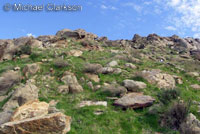 |
|
| |
Habitat, coastal Riverside County
© Michael Clarkson |
|
| |
|
|
| Predation |
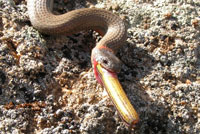 |
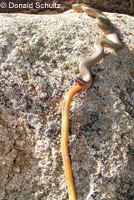 |
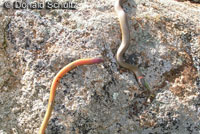 |
| Ring-necked Snakes use a mild venom to subdue their prey which include snakes and lizards. This snake from San Diego County regurgitated a legless lizard that it had recently eaten. © Donald Schultz |
| |
| Short Videos of Anniella Species |
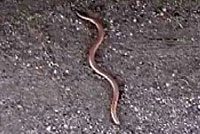 |
 |
 |
| A Southern California Legless Lizard crawls then quickly burrows into loose soil in Riverside County. |
A Southern California Legless Lizard writhes around rapidly on a board in Riverside County. Accustomed to living on soft sand it can burrow into, it has difficulty moving on the hard surface. |
Black Legless lizards burrow into Monterey County sand dunes. |
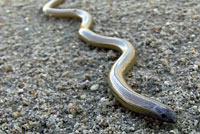 |
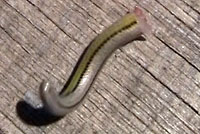 |
|
| A Bakersfield Legless Lizard crawls and burrows into loose soil in Bakersfield. |
The detached tail of a Southern California Legless Lizard wriggles rapidly, looking like a living creature, until it gradually slows down. This illustrates how a lizard can drop its tail to distract a predator then crawl away to safety while the predator chases the tail.
(This tail was not removed intentionally, it was unexpectedly dropped by the lizard when it was stressed from being handled.) |
|
| |
|
|
| Description |
Based on the one species concept of Anniella pulchra as it was known before 2013.
Behavioral differences between the recognized 5 species of Anniella are not known.
|
| Size |
4 - 3/8 to 7 inches long from snout to vent (11.1 - 17.8 cm). (Stebbins, 2003)
|
| Appearance |
A small slender lizard with no legs, eyelids, a shovel-shaped snout, smooth shiny scales, and a blunt tail.
Sometimes confused for a snake, but snakes have no eyelids. On close observation the presence of eyelids is apparent when this lizard blinks.
|
| Color and Pattern |
Dorsal coloration varies from metallic silver, beige, dark brown, to black.
Ventral coloration varies from whitish to bright yellow.
Typically there is a dark line along the back and several thin stripes between scale rows along the sides where the dorsal and ventral colors meet, but variants occur.
Lizards from Porterville, Tulare County, have dark blotches underneath.1
Some lizards from the Bakersfield area have reddish coloring underneath.
|
| Life History and Behavior |
Activity |
Does not bask in direct sunlight.
Tolerance of low temperatures allows activity in cool conditions.
Lives mostly underground, burrowing in loose sandy soil.
Forages in loose soil, sand, and leaf litter during the day.
Sometimes found on the surface at dusk and at night.
Apparently active mostly during the morning and evening when they forage beneath the surface of loose soil or leaf litter which has been warmed by the sun.
|
| Defense |
| The tail detaches and writhes on the ground for several minutes to distract a potential predator while the lizard escapes. |
| Predators |
| Known predators include ringneck snakes, common kingsnakes, deer mice, long-tailed weasels, domestic cats, California thrashers, American robins, and loggerhead shrikes. |
| Diet and Feeding |
Eats primarily larval insects, beetles, termites, and spiders.
Conceals itself beneath leaf litter or substrate then ambushes its prey. |
| Reproduction |
Bears live young.
Probably breeds between early spring and July, with 1 - 4 young (usually 2) born between September and November.
|
| Geographical Range |
Occurs from the southern edge of the San Joaquin River in northern Contra Costa County south to northwestern Baja California Del Norte just south of Colonia Guerrero. Occurs in scattered locations in the San Joaquin Valley, and along the southern Sierra Nevada mountains, including the Tehachapi Mountains, and at the edge of the deserts in Walker Pass, Morongo Valley, Whitewater, and the east slope of the Peninsular Ranges. Also occurs in the western Mojave Desert near Lancaster in the Antelope Valley. There is an old unconfirmed record from Redwood Canyon, Marin County, and others from San Francisco and Palo Alto.
Two melanistic or dusky populations
occur. One is in coastal dunes from Morro Bay south to the mouth of the Santa Maria River in San Luis Obispo County. The other, recognized as Anniella pulchra nigra, occurs in beach dunes on the Monterey Peninsula and on the southern coast of Monterey Bay (south of the Salinas River) in Monterey County.
Possibly introduced into some areas of the southern Sierra Nevada foothills through nursery and tree-planting operations.
|
| Elevational Range |
From sea level to around 5,900 ft.
|
| Habitat |
Occurs in moist warm loose soil with plant cover. Moisture is essential. Occurs in sparsely vegetated areas of beach dunes, chaparral, pine-oak woodlands, desert scrub, sandy washes, and stream terraces with sycamores, cottonwoods, or oaks. Leaf litter under trees and bushes in sunny areas and dunes stabilized with bush lupine and mock heather often indicate suitable habitat. Often can be found under surface objects such as rocks, boards, driftwood, and logs. Can also be found by gently raking leaf litter under bushes and trees. Sometimes found in suburban gardens in Southern California.
|
| Notes on Taxonomy |
In September of 2013 by Papenfuss and Parham3 divided the existing one species of legless lizard into five species based on the five lineages from their 2008 study2, naming four new species and giving a new common name to the species now known as Anniella pulchra. The five species are:
Anniella alexanderae - Temblor Legless Lizard
Anniella campi - Southern Sierra Legless Lizard
Anniella grinnelli - Bakersfield Legless Lizard
Anniella pulchra - Northern California Legless lizard
Anniella stebbinsi - Southern California Legless Lizard
Range Map of 5 Species:
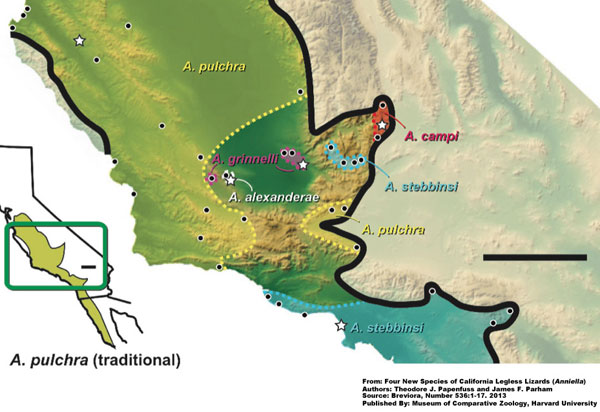
Subspecies
Anniella pulchra is traditionally split into two subspecies - Anniella pulchra pulchra - Silvery Legless Lizard, and Anniella pulchra nigra - Black Legless lizard, but these subspecies are no longer recognized by the SSAR (whose taxonomy is followed here) because of a 2000 study that showed that A. p. nigra and the Morro Bay populations have been found to have different evolutionary ancestors than A. p. pulchra, but not enough to warrant recognition as a distinct taxon. The 2008 study by Parham and Pappenfuss does not provide any information regarding these subspecies, but it does separate A. p. nigra into its own group, and the authors, in personal communications with an environmental scientist with the California Department of Fish and Game (related to me October 2010) have said that there is information that supports the recognition of A. p. nigra as a separate subspecies or even as a unique species, and their belief is that Pearse and Pogson did not mean to completely sink the subspecies, they meant to show that it had diverged significantly from the Morro Bay population, which should not be considered A. p. nigra.
From the SSAR Official Names List 6th Edition, 2008:
"Pearse and Pogson (2000, Evolution 54: 1041–1046) presented evidence that the melanistic form previously designated Anniella pulchra nigra is polyphyletic, its Monterey Bay and Morro Bay populations having been derived independently from the silvery form previously designated A. p. pulchra. Although Pearse and Pogson did not propose any taxonomic changes, their results indicate that the subspecies A. p. pulchra and A. p. nigra do not correspond with separated or partially separated lineages, and therefore we do not recognize subspecies within A. pulchra. The existence and extent of genetic continuity between populations of melanistic and silvery legless lizards, as well as between northern and southern mtDNA haplotype clades, deserves further study."
Five Lineages of Anniella are identified in 2008:
Parham and Pappenfuss (2008)2 using mt and nuDNA found five previously unrecognized genetic lineages of Anniella pulchra that are evolving independently:
Lineage A - a northern group extending to the southern part of the San Joaquin Valley, part of the south coast range, and in an isolated area of the northern Mojave desert;
Lineage B - a central group found in the southern San Joaquin Valley and parts of the Tehachapi and Transverse mountains; and two small isolated forms;
Lineage C - found in the eastern Carrizo Plain and the Bakersfield area;
Lineage D - found in isolated springs in the Eastern Sierra Nevada Mountains.
Lineage E - a southern group found south of the transverse ranges, and in an isolated region in the Paiute Mountains
Lineage B and C are diagnosable based on color (most likely red ventral coloring, though they do not say) and the Carrizo population of Lineage C represents an intergrade or hybrid population. They stop short of calling any of these lineages distinct species, but they do state that "...the possibility remains that some of the lineages reported here are genetically isolated to the point of being considered species under some concepts."
|

Map from Parham and Pappenfuss, 2008 2
|
| Conservation Issues (Conservation Status) |
The State of California continues to recognize two subspecies of Anniella pulchra. A. p. nigra is a protected species.
Much of this lizard's habitat has been lost due to agriculture, housing development, sandmining, and other human land development, recreation, especially off-road vehicles in coastal dune areas, and by the introduction of exotic plants such as ice plant. 1
Protected from take with a sport fishing license in 2013. |
|
| Taxonomy |
| Family |
Anniellidae |
North American Legless Lizards |
Boulenger 1885 |
Genus
|
Anniella |
North American Legless Lizards |
Gray, 1852 |
| Original Description |
Gray, 1852 - Ann. Mag. Nat. Hist., Ser. 2, Vol. 10, p. 440
from Original Description Citations for the Reptiles and Amphibians of North America © Ellin Beltz
|
| Meaning of the Scientific Name |
Anniella - Latin: annela ringed and Latin: -ella little - refers to little rings in pattern. Or possibly an honorific for someone named "Annie" or a coined name. See Farancia.
pulchra - Latin - beautiful - refers to the silvery color
nigra - Latin - niger = black
from Scientific and Common Names of the Reptiles and Amphibians of North America - Explained © Ellin Beltz
|
| Alternate Names |
Anniella pulchra pulchra - Silvery Legless Lizard
Shovel-snouted Legless Lizards - Silvery Footless Lizard
|
| Related or Similar California Lizards |
None
|
| More Information and References |
California Department of Fish and Wildlife
Stebbins, Robert C., and McGinnis, Samuel M. Field Guide to Amphibians and Reptiles of California: Revised Edition (California Natural History Guides) University of California Press, 2012.
Stebbins, Robert C. California Amphibians and Reptiles. The University of California Press, 1972.
Flaxington, William C. Amphibians and Reptiles of California: Field Observations, Distribution, and Natural History. Fieldnotes Press, Anaheim, California, 2021.
Samuel M. McGinnis and Robert C. Stebbins. Peterson Field Guide to Western Reptiles & Amphibians. 4th Edition. Houghton Mifflin Harcourt Publishing Company, 2018.
Stebbins, Robert C. A Field Guide to Western Reptiles and Amphibians. 3rd Edition. Houghton Mifflin Company, 2003.
Behler, John L., and F. Wayne King. The Audubon Society Field Guide to North American Reptiles and Amphibians. Alfred A. Knopf, 1992.
Powell, Robert., Joseph T. Collins, and Errol D. Hooper Jr. A Key to Amphibians and Reptiles of the Continental United States and Canada. The University Press of Kansas, 1998.
Bartlett, R. D. & Patricia P. Bartlett. Guide and Reference to the Turtles and Lizards of Western North America (North of Mexico) and Hawaii. University Press of Florida, 2009.
Jones, Lawrence, Rob Lovich, editors. Lizards of the American Southwest: A Photographic Field Guide. Rio Nuevo Publishers, 2009.
Smith, Hobart M. Handbook of Lizards, Lizards of the United States and of Canada. Cornell University Press, 1946.
2 Parham, James F., Theodore J. Papenfuss. High genetic diversity among fossorial lizard populations (Anniella pulchra) in a rapidly developing landscape (Central California) Conserv Genet DOI 10.1007/s10592-008-9544-y
Received: 12 September 2007 / Accepted: 15 February 2008. Springer Science+Business Media B.V. 2008
3 Four New Species of California Legless Lizards (Anniella)
Author(s): Theodore J. Papenfuss and James F. Parham
Source: Breviora, Number 536:1-17. 2013.
Published By: Museum of Comparative Zoology, Harvard University
URL: http://www.bioone.org/doi/full/10.3099/MCZ10.1
|
|
|
The following conservation status listings for this animal are taken from the July 2022 State of California "Special Animals List" and the July 2022 "State and Federally Listed Endangered and Threatened Animals of California" list, both of which are produced by multiple agencies and can be downloaded here: https://www.wildlife.ca.gov/Data/CNDDB/Plants-and-Animals.
You can check this link to see if there are more current lists.
A detailed explanation of the meaning of the status listing symbols can be found on the
Special Animals List. For quick reference, I have copied some of them on my Special Status Information page.
If no status is listed here, the animal is not included on either list. This most likely indicates that there are no serious conservation concerns for the animal. To find out more about an animal's status you can go to the NatureServe and IUCN websites to check their rankings.
The Special Animals List recognizes two subspecies of one species of Anniella, Anniella pulchra -
A. p. pulchra, and A. p. nigra.
The status listing for A. p. nigra can be found belowthe listing for A. pulchra.
|
| Organization |
Status Listing |
Notes |
| NatureServe Global Ranking |
|
|
| NatureServe State Ranking |
|
|
| U.S. Endangered Species Act (ESA) |
None |
|
| California Endangered Species Act (CESA) |
None |
|
| California Department of Fish and Wildlife |
DFG:SSC |
California Species of Special Concern |
| Bureau of Land Management |
None |
|
| USDA Forest Service |
USFS:S |
Sensitive |
| IUCN |
|
|
Anniella pulchra nigra - Black Legless Lizard
|
Organization
|
Status Listing
|
| U.S. Endangered Species Act (ESA) |
None |
|
| California Endangered Species Act (CESA) |
None |
|
| California Department of Fish and Game |
SSC |
California Species of Special Concern |
| Bureau of Land Management |
None |
|
| USDA Forest Service |
USFS:S |
Sensitive |
| Natureserve Global Conservation Status Ranks |
G3G4T2T3QS2 |
Vulnerable |
World Conservation Union - IUCN Red List
|
None |
|
|
|


































































































